Two popular options often come to mind when choosing wood for furniture: Acacia and Teak. Both kinds of wood have unique characteristics and benefits, making them suitable for various applications.
Read on as we explore the properties of Acacia and Teak wood, exploring their origins, manufacturing processes, and differences. By sharing our experiences, we aim to provide a comprehensive guide to help you decide which wood is best for your furniture needs.
Table of Contents
- What is Acacia Wood?
- What is Teak Wood?
- 10 Differences Between Acacia and Teak Wood
- Origin and Species of Acacia Vs. Teak Wood
- Appearance of Acacia Vs. Teak Wood
- Durability of Acacia Vs. Teak Wood
- Natural Oils of Acacia Vs. Teak Wood
- Weight of Acacia Vs. Teak Wood
- Workability of Acacia Vs. Teak Wood
- Maintenance of Acacia Vs. Teak Wood
- Sustainability of Acacia Vs. Teak Wood
- Cost of Acacia Vs. Teak Wood
- Applications of Acacia Vs. Teak Wood
- Our Opinion: Teak for Outdoors, Acacia for Indoors
- Related Content
What is Acacia Wood?
Acacia wood comes from the Acacia tree, which belongs to the Fabaceae family. These trees are primarily found in tropical and subtropical regions worldwide, with a significant presence in Australia, Africa, Asia, and the Pacific Islands.
Acacia trees are known for their fast growth and ability to thrive in various soil conditions, making them a sustainable choice for timber production. Because of the fast growth, many consider this a better eco-choice than many other woods.
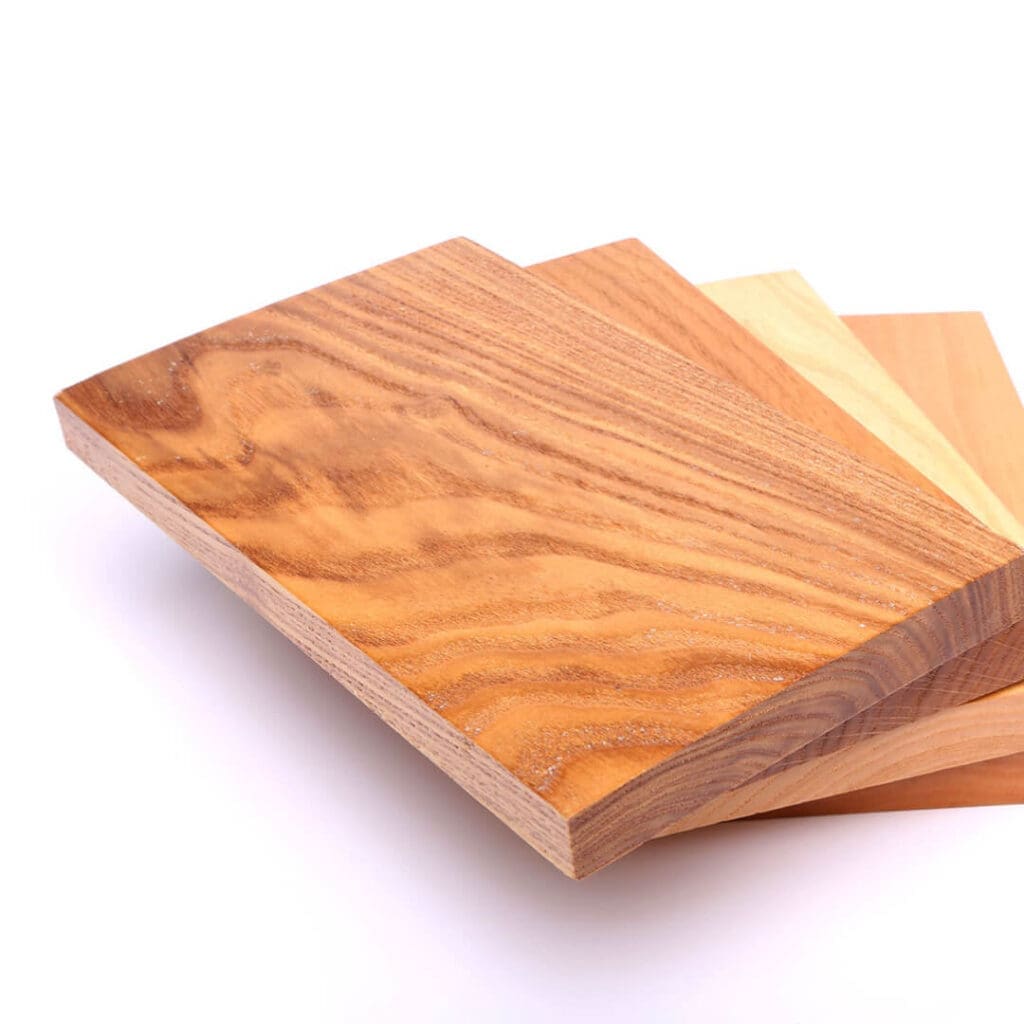
Origins and Manufacturing of Acacia Wood
Acacia wood is predominantly sourced from countries like Australia, Africa, and Southeast Asia.
Vietnam has become a significant producer of Acacia wood in recent years due to its favorable climate and abundant forest resources. The Vietnamese Acacia industry has increased, driven by the demand for high-quality wood for furniture and other applications.
The manufacturing process of Acacia wood involves several stages. Initially, the trees are harvested and cut into logs. These logs are then transported to sawmills, where they are sawn into planks of varying thicknesses.
The planks undergo kiln drying to reduce moisture content, ensuring stability and durability. Finally, the dried planks are processed into finished products, such as furniture, flooring, and decorative items.
What is Teak Wood?
Teak wood is derived from the Tectona grandis tree, native to South and Southeast Asia. It is renowned for its exceptional durability, natural oils, and resistance to weathering and pests.
Teak has been a preferred choice for centuries, especially in shipbuilding, outdoor furniture, and high-end carpentry, due to its robust characteristics and attractive golden-brown hue.
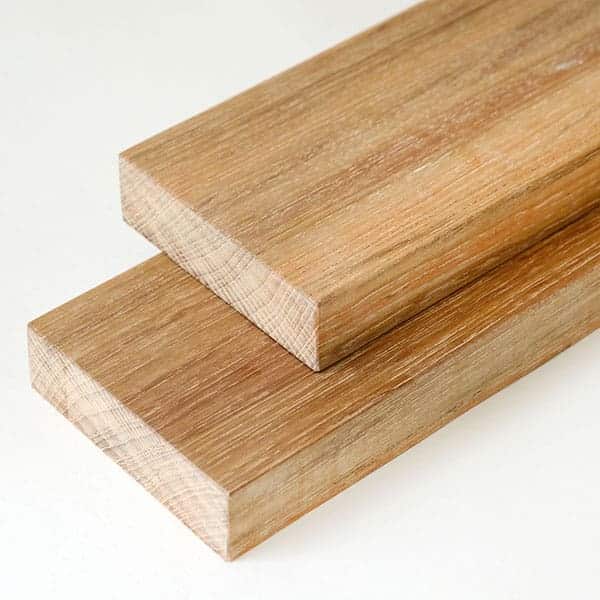
Origins and Manufacturing of Teak Wood
Teak wood primarily comes from India, Myanmar (formerly Burma), Thailand, and Indonesia. These regions have a long history of cultivating and exporting Teak.
Thanks to its continued expertise in wood processing, Vietnam has also become a significant player in the Teak wood industry in recent years.
The manufacturing of Teak wood follows a meticulous process. The trees are carefully selected and harvested, ensuring minimal environmental impact.
After harvesting, the logs are transported to sawmills to cut into planks. Like Acacia wood, Teak planks undergo kiln drying to achieve the desired moisture content. The final products are then crafted with precision, highlighting the natural beauty and strength of Teak wood.
10 Differences Between Acacia and Teak Wood
Even though many people perceive Teak wood and Acacia wood to be quite similar, they are quite different types of wood. Read on as we explore some of the key differences between them.
Origin and Species of Acacia Vs. Teak Wood
- Acacia wood comes from the Acacia tree, primarily in tropical and subtropical regions globally.
- Teak wood is sourced from the Tectona grandis tree, which is native to South and Southeast Asia.
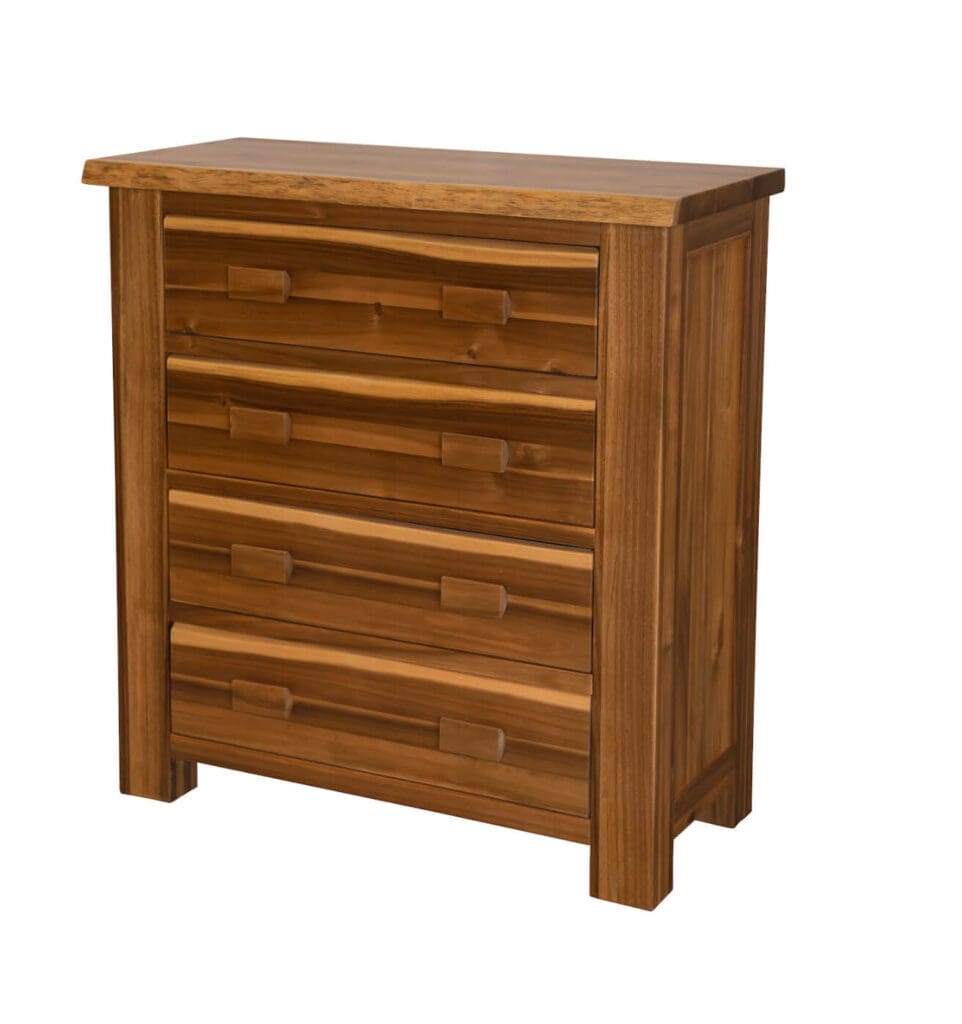
Acacia trees proliferate in diverse environments, which makes their wood readily available and more sustainable. The species’ adaptability to different climates contributes to its widespread use.
On the other hand, Teak trees grow slowly and are primarily found in specific regions like Southeast Asia, which makes Teak wood rarer and more expensive.
Appearance of Acacia Vs. Teak Wood
- Acacia wood has a distinctive grain pattern with rich, dark hues and color variations.
- Teak wood boasts a golden-brown color that ages to a beautiful silvery-grey patina.
Acacia wood’s aesthetic appeal lies in its varied grain patterns and rich colors, ranging from golden browns to deep reds. This variation can add a unique and rustic charm to furniture.
Teak wood, however, has a more uniform and elegant appearance. Its warm golden hue can age gracefully to a grey patina, making it a timeless choice for sophisticated designs.
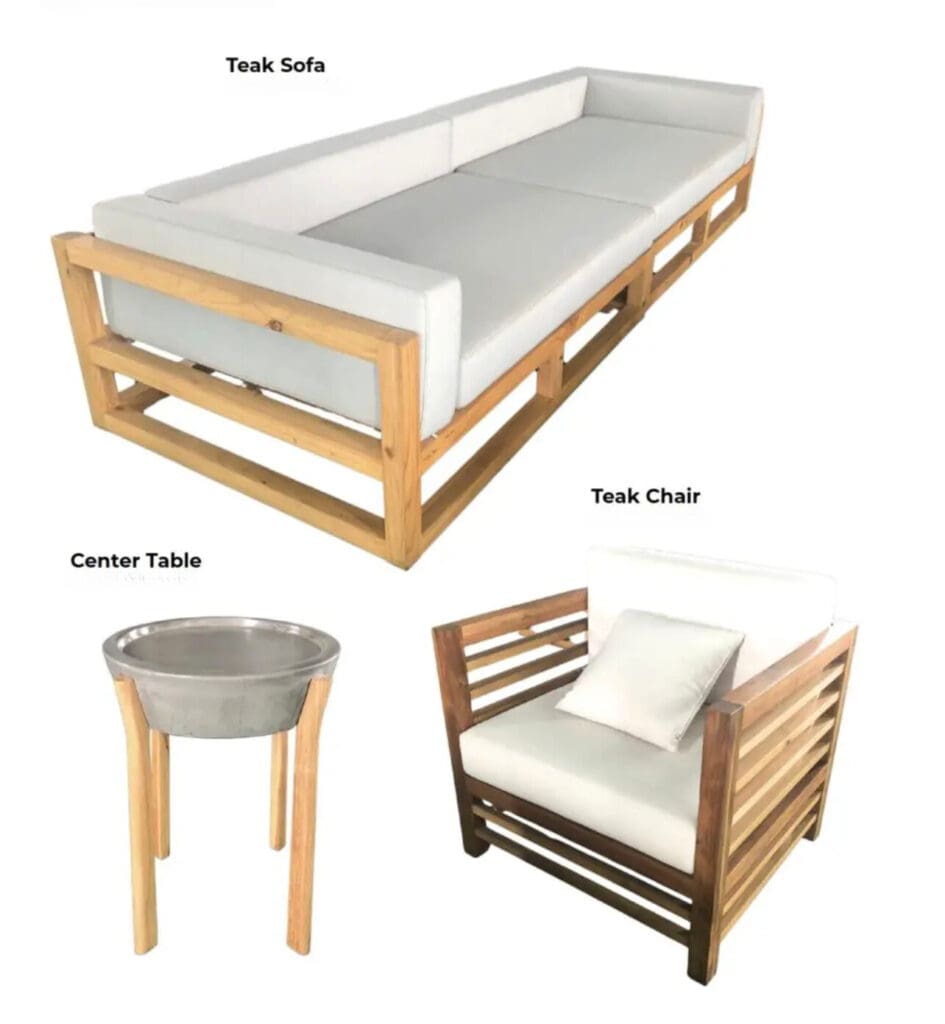
Durability of Acacia Vs. Teak Wood
- Acacia wood is highly durable but slightly less resistant to weathering compared to Teak.
- Teak wood is renowned for its superior durability and resistance to extreme weather conditions and pests.
Acacia and Teak are durable, but Teak’s higher resistance to environmental factors like moisture, UV rays, and pests makes it superior for outdoor use.
Acacia is durable indoors but may not perform as well as Teak in extreme outdoor conditions.
Natural Oils of Acacia Vs. Teak Wood
- Acacia wood has a moderate natural oil content, which offers some protection against moisture.
- Teak wood is rich in natural oils, providing excellent resistance to water, rot, and insects.
The natural oils in Teak wood act as a barrier against water, mold, and termites, significantly enhancing its longevity. Acacia has less natural oil, offering moderate protection, making it more suitable for indoor applications where moisture is less of a concern.
Weight of Acacia Vs. Teak Wood
- Acacia wood is denser and heavier than Teak, making it sturdy but less easy to work with.
- Teak wood is relatively lighter, making it easier to handle and craft.
Acacia’s density contributes to its weight, making it a strong and sturdy option for furniture and harder to move and manipulate during manufacturing.
Teak’s lighter weight and strength make it a preferred choice for detailed craftsmanship and large outdoor structures.
Workability of Acacia Vs. Teak Wood
- Acacia wood can be challenging due to its density and hardness.
- Teak wood is known for its workability, allowing for intricate designs and smooth finishes.
Acacia’s hardness can challenge craftsmen, requiring specialized tools and techniques. Conversely,
Teak’s workability allows for more intricate and delicate designs, making it a favorite among high-end furniture makers and carpenters.
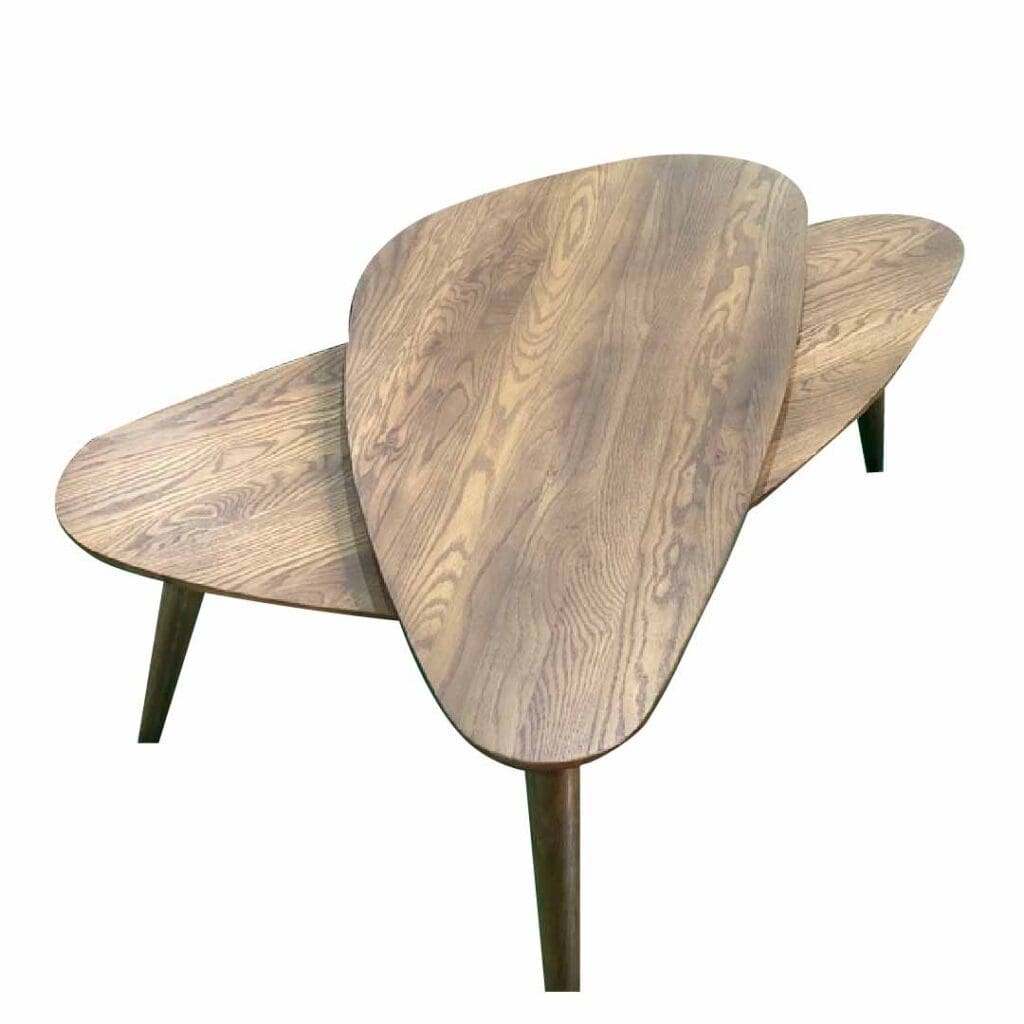
Maintenance of Acacia Vs. Teak Wood
- Acacia wood requires regular maintenance to retain its appearance, especially in outdoor settings.
- Teak wood is low-maintenance, needing minimal care to maintain its natural beauty.
Acacia wood, especially outdoors, requires regular treatment and sealing to prevent cracking and fading.
Teak’s natural oils reduce frequent maintenance, allowing it to retain its beauty with minimal effort, a significant advantage for outdoor furniture.
Sustainability of Acacia Vs. Teak Wood
- Acacia wood is considered more sustainable due to the fast growth of Acacia trees.
- Teak wood sustainability depends on the source; plantation Teak is more sustainable than old-growth Teak.
Given the rapid growth of Acacia trees, their wood is more sustainable and has a lower environmental impact. Teak, particularly old-growth varieties, can pose sustainability challenges due to longer growth periods and deforestation concerns. However, responsibly managed Teak plantations offer a more eco-friendly option.
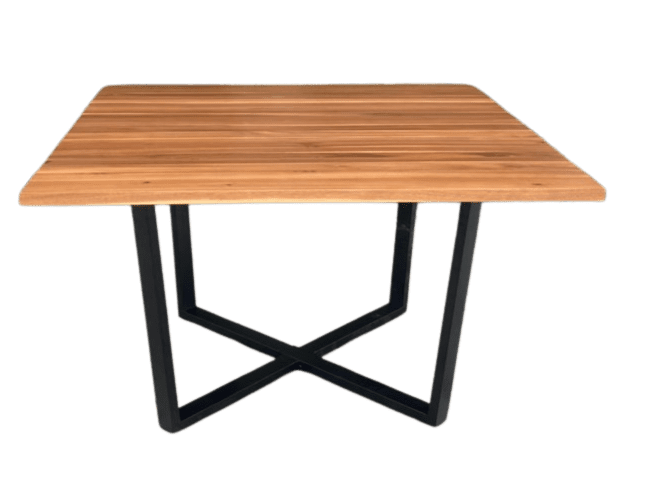
Cost of Acacia Vs. Teak Wood
- Acacia wood is generally more affordable than Teak, making it a cost-effective option.
- Teak wood is more expensive due to its premium qualities and extended growth period.
Acacia wood’s affordability makes it accessible to many consumers, providing a budget-friendly option without compromising quality. Teak’s higher price reflects its premium attributes and more extended cultivation period, positioning it as a luxury material.
Applications of Acacia Vs. Teak Wood
- Acacia wood is used for indoor furniture, flooring, and decorative items.
- Teak wood is ideal for outdoor furniture, boat building, and high-end carpentry.
-Acacia’s versatility makes it suitable for indoor furniture, where it can showcase its aesthetic diversity and robustness. Teak’s exceptional durability and weather resistance make it ideal for outdoor furniture, yachts, and structures exposed to harsh elements, ensuring long-lasting performance.
Our Opinion: Teak for Outdoors, Acacia for Indoors
Based on our extensive experience with both types of wood, we have found that each has optimal applications.
Teak for Outdoor Furniture
Teak is undeniably an excellent wood for outdoor furniture manufacturing. Its unmatched durability, weather resistance, and low maintenance make it the perfect choice for items exposed to the elements.
We use Teak extensively for outdoor furniture, knowing that it will stand the test of time and continue to look beautiful year after year.
- Longevity: Teak’s natural oils protect it from moisture and pests, ensuring longevity.
- Aesthetics: The wood’s ability to age gracefully adds a sophisticated touch to outdoor spaces.
- Strength: Teak can withstand heavy use and harsh weather without deteriorating.
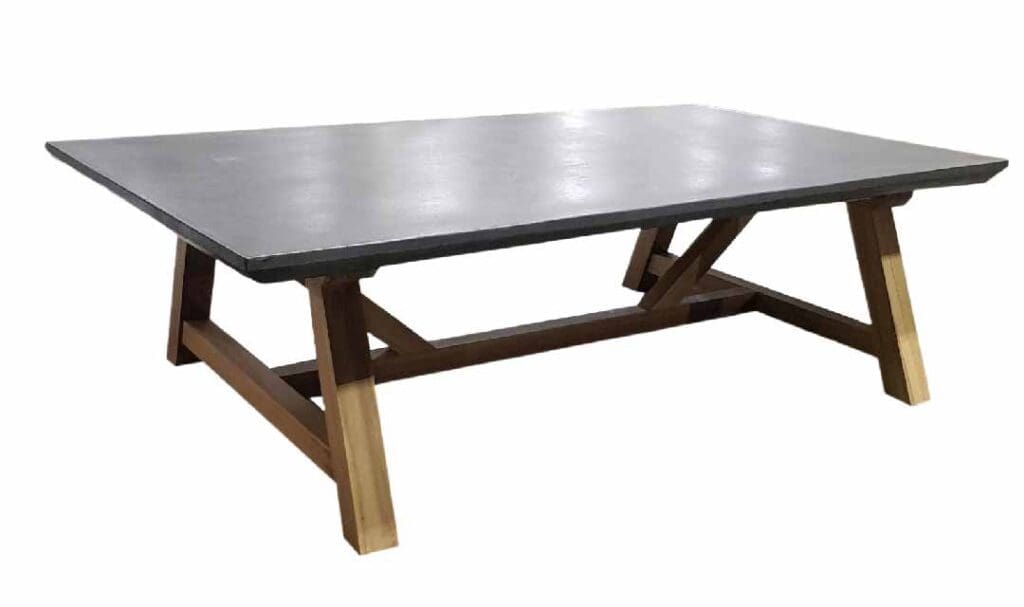
Acacia for Indoor Furniture
Acacia wood shines in indoor settings. Its rich grain and color variations bring warmth and character to any room. We appreciate Acacia’s affordability and sustainability, making it an excellent choice for indoor furniture.
- Versatility: Acacia can be used for various indoor furniture pieces, from dining tables to cabinets.
- Cost-effective: It offers a high-quality alternative to more expensive woods like Teak.
- Aesthetic Appeal: The unique grain patterns add a touch of natural beauty to indoor decor.
Choosing between Acacia and Teak wood depends mainly on the intended use and personal preferences. While Acacia offers a sustainable, affordable, and visually appealing option for indoor furniture, Teak stands out as the premier choice for outdoor furniture, thanks to its exceptional durability and timeless beauty.
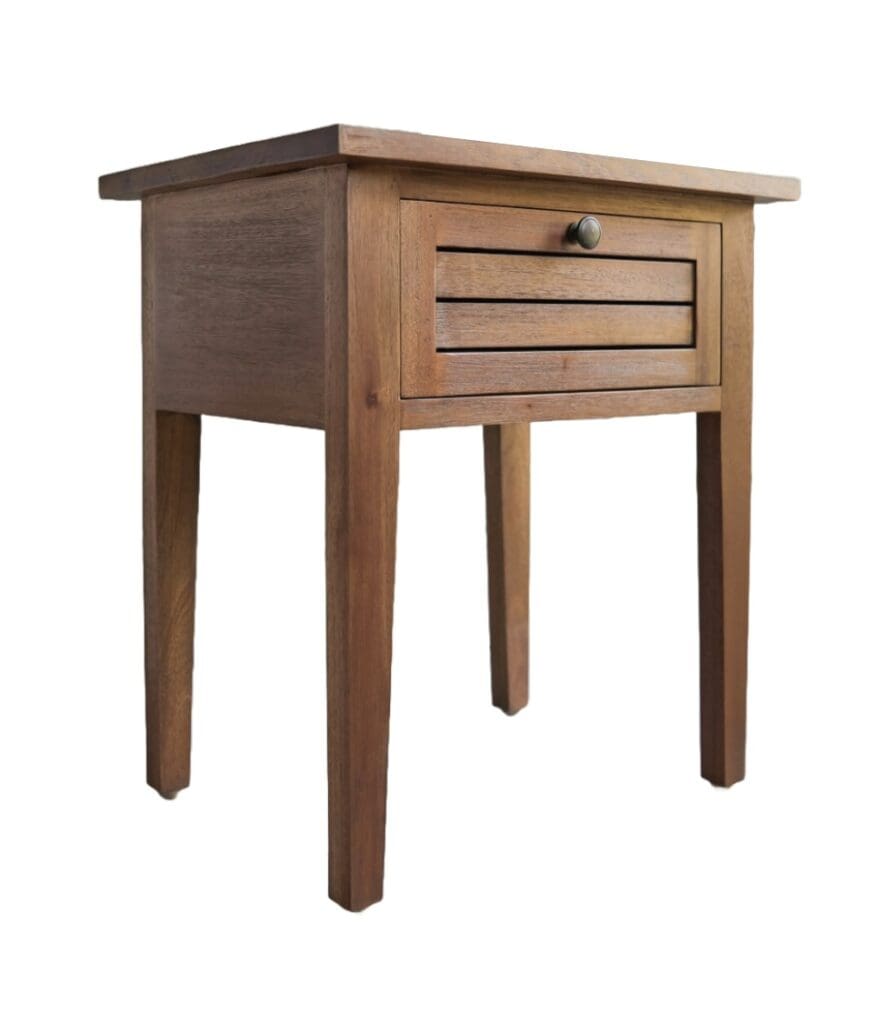
In our experience, leveraging the strengths of each wood type allows us to create high-quality, long.
Listen To Our Podcast About
Is Acacia Wood as Good as Teak? 10 Key Differences Explored Below or By clicking here.

If you are interested in seeing how Mondoro can help you with your acacia and teak wood, and other home decor products – we would love to talk to you about how we can help you.
Find out more about how Mondoro can help you create, develop, and manufacture excellent home decor and furniture products – don’t hesitate to contact me, Anita. Check out my email by clicking here or become a part of our community and join our newsletter by clicking here.
Mondoro gives out a FREE Lookbook to anyone interested. You can receive a copy of our latest Lookbook by clicking here.
Listen to our Podcast called Global Trade Gal. You can find it on all major podcast platforms. Try out to listen to one of our podcasts by clicking here.
Subscribe to our Mondoro Company Limited YouTube Channel filled with great videos and information by clicking here.
Related Content
Recycled Pine Furniture, What You Need to Know
Reclaimed and recycled wood may seem to be the same thing, but they are not exactly the same. Recycled wood is wood that would have otherwise been discarded or not used. Wood is a naturally sustainable material as it can be regrown and replaced. There are a variety of furniture shapes and styles that can be used to make recycled pine furniture.
You can discover more by reading Recycled Pine Furniture, What You Need to Know by clicking here.
How Do I Find an Overseas Manufacturer To Produce My Product Ideas?
Though it is not easy to find reliable overseas manufacturers, you can take some basic steps to find a dependable supplier. This process to locate this dependable manufacturer can include things such as finding a buying agent, attending trade shows, doing some online searches, talking to some trade organization, and getting a referral from someone from the industry.
You can read our blog on How Do I Find an Overseas Manufacturer to Produce my Product Ideas? by clicking here.
What Does “FSC Certified” Wood Mean?
FSC means the Forrest Stewardship Council, a nonprofit certification process to ensure that wood used for products is from a managed forest and source. The goal of the FSC is to stop illegal logging activities and certify that wood used for a product has reached the standard to be called FSC-certified wood.
You can learn more by reading our blog, What Does “FSC Certified” Wood Mean? by clicking here.

